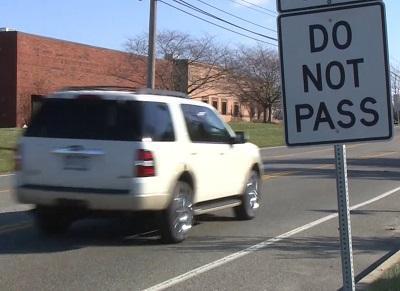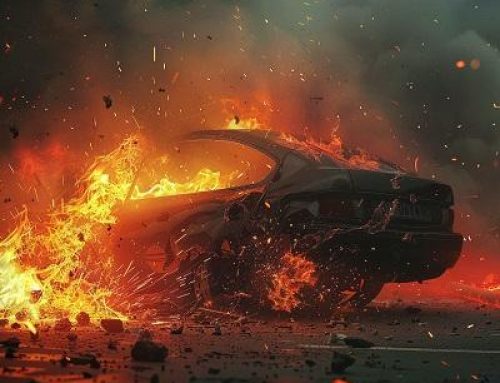Driving is an essential part of our daily lives, but it also comes with its own set of risks. Whether you’re a new driver or a seasoned pro, it’s crucial to always be aware of your surroundings and to be prepared for any situation that may arise on the road. This is where defensive driving comes in. Defensive driving is a method of driving that focuses on anticipating potential hazards and taking action to avoid them.
In the United States alone, there were over 36,000 deaths in car accidents in 2019, according to the National Highway Traffic Safety Administration. This number is staggering and highlights the importance of defensive driving and staying aware on the road. Defensive driving is a method of driving that focuses on anticipating potential hazards and taking action to avoid them. By practicing defensive driving techniques, we can reduce our risk of accidents and injuries on the road. In this article, we will discuss 10 practical tips for defensive driving to help you stay safe on the road.
By following these tips, you can be better prepared for any situation that may arise on the road. From keeping your eyes moving to avoiding distractions, these tips will help you to be more aware and in control of your vehicle. It’s important to remember that defensive driving is not just about following the rules of the road, but also about anticipating potential hazards and taking action to avoid them. By being proactive and aware, you can reduce your risk of accidents and injuries on the road.
Now, let’s dive into the list of tips for defensive driving. These tips will provide practical advice on how to stay safe on the road and reduce the risk of accidents and injuries. Whether you’re a new driver or a seasoned pro, these tips will help you to be more aware and in control of your vehicle.
- Keep your eyes moving: Keeping your eyes moving is crucial for defensive driving because it allows you to constantly scan the road ahead and be aware of what’s happening around you. This includes looking out for other cars, pedestrians, and obstacles that may be in your way. By keeping your eyes moving, you’ll be able to spot potential hazards before they become a problem, and take action to avoid them. For example, if you notice a car swerving in its lane, you can adjust your speed and position on the road to give yourself more space and time to react. It’s important to not only look ahead but also check your mirrors and side windows. This will give you a full view of your surroundings and help you anticipate any potential hazards. Additionally, it’s also a good idea to do a quick scan of the cars behind you and on the side to check if they are following too closely or if they are trying to merge into your lane. By keeping a constant lookout, you’ll be able to react quickly and safely to any situation that may arise on the road.
- Leave plenty of space: One of the most important rules of defensive driving is to always leave plenty of space between you and the vehicle in front of you. This will give you more time to react if the vehicle in front of you suddenly stops or swerves. By leaving plenty of space, you’ll be able to slow down or stop without hitting the vehicle in front of you, and avoid any collisions. The recommended following distance is the “two-second rule,” which means that you should be at least two seconds behind the car in front of you. This can be determined by picking a fixed point such as a sign or a tree, and counting the seconds it takes for your vehicle to reach the same point as the car in front of you passed. If it takes you less than two seconds, you should back off and create more space. Also, in bad weather conditions, it’s recommended to increase the following distance to give yourself more time to react.
- Be prepared to brake: Always be prepared to brake when you’re driving. This means keeping your foot hovering over the brake pedal so that you can react quickly if you need to. Being prepared to brake means that you’ll be able to stop quickly and safely if the vehicle in front of you suddenly stops or if a potential hazard arises on the road. It’s also important to keep your brakes in good working condition. This means regularly checking your brake pads and having them replaced if they are worn down. If your brakes are in poor condition, they may not work as well, which can be dangerous in emergency situations. Additionally, it’s also important to brake smoothly, rather than abruptly, to avoid skidding or losing control of your vehicle.
- Avoid distractions: Distracted driving is one of the leading causes of accidents. Avoiding distractions such as using your phone, eating or even changing the radio station while driving can help you stay focused on the road and avoid accidents. Distracted driving can take many forms, from checking your phone to adjusting your GPS. Anything that takes your attention away from the road can be dangerous, so it’s important to eliminate these distractions as much as possible. It’s also important to put your phone on silent or in a place you can’t reach it while driving. Additionally, if you need to use your phone, pull over to a safe place to do so. Eating or drinking should also be avoided while driving, as it takes your attention away from the road and can be messy if something spills. Furthermore, if you need to change the radio station or adjust the volume, do it before you start driving or when you have a red light.
- Watch for other drivers: Always be aware of other drivers on the road. This includes looking out for drivers who may be under the influence of alcohol or drugs, as well as those who may be distracted or reckless. Being aware of other drivers is important because it allows you to anticipate their actions and react accordingly. For example, if you notice a driver swerving in their lane, you can give them more space and slow down to avoid any potential collisions. It’s also important to watch for other drivers who may be driving aggressively. This includes tailgating, speeding, or cutting in and out of lanes. These types of drivers can be dangerous and unpredictable, so it’s important to give them extra space and avoid getting into any confrontations with them. Additionally, be aware of other drivers who may be in the process of merging or changing lanes, and give them enough room and time to do so safely.
- Use your signals: Using your signals is a crucial part of defensive driving. It lets other drivers know your intended actions, which helps to avoid confusion and accidents. Signal lights are an important tool that allows you to communicate your intentions to other drivers. It’s important to use them when you’re changing lanes, turning, or merging. It’s also important to make sure that your signal lights are working properly. This means regularly checking them and replacing them if they are not working. Additionally, it’s also important to use your signals well in advance before making a turn or changing lanes. This will give other drivers enough time to react and adjust their speed and position accordingly.
- Avoid tailgating: Tailgating, or following too closely behind another vehicle, is a major cause of accidents. By leaving plenty of space between you and the vehicle in front of you, you’ll be able to react more quickly if that vehicle suddenly stops or swerves. Tailgating puts unnecessary pressure on the driver in front of you and can also cause accidents if they have to brake suddenly. It’s also important to remember that different types of vehicles require different following distances. For example, following a large truck or trailer requires more space than following a small car. This is because trucks and trailers have larger blind spots and take longer to stop. So, it’s always important to adjust your following distance according to the type of vehicle in front of you.
- Be aware of weather conditions: Keep an eye on the weather forecast and be aware of any adverse weather conditions that may affect your driving. This includes heavy rain, snow, or ice, which can make the road slippery and more dangerous. By being aware of the weather conditions, you’ll be able to adjust your speed and driving style to suit the conditions. In bad weather conditions, it’s important to slow down and leave more space between you and the vehicle in front of you. This will give you more time to react if the vehicle in front of you suddenly stops or swerves. Additionally, it’s also important to turn on your headlights and use your windshield wipers if it’s raining or snowing. This will improve visibility and make it easier for other drivers to see you. Furthermore, be prepared for changing weather conditions and be aware of the possibility of black ice on the road, especially in cold regions.
- Be prepared for emergencies: Always be prepared for emergencies. This includes having a first aid kit, a flashlight, and a phone charger in your car in case of an emergency. It’s also important to have an emergency plan in case of a breakdown or accident. This can include having a phone with emergency numbers, a map, and a charged cell phone. Additionally, you should also be familiar with your car’s functions and know how to change a tire, check the oil, and jump start the battery if necessary. It’s also important to have a basic understanding of first aid and know how to respond in case of an emergency. This includes knowing how to administer first aid for common injuries and illnesses, such as cuts, bruises, and heat stroke. Additionally, it’s also important to have a basic understanding of how to use the first aid kit and know what’s inside.
- Be patient: One of the most important rules of defensive driving is to be patient. By taking your time and being patient, you’ll be able to react more quickly and effectively to any situation that may arise on the road. Being patient means that you’ll be less likely to rush and make mistakes, which can be dangerous on the road. It’s also important to avoid road rage and to not let other drivers get under your skin. Many accidents happen because of impatient or aggressive drivers, who are trying to rush or cut in and out of lanes. So, stay calm and be patient, and you’ll be able to react more quickly and effectively to any situation that may arise on the road. Additionally, try to avoid rush hours, if possible, and plan your trip ahead to avoid heavy traffic.
By following these 10 practical safety tips for defensive driving, you’ll be better prepared to anticipate potential hazards and take action to avoid them. Remember, defensive driving is all about being aware of your surroundings, being prepared for any situation, and taking action to stay safe on the road. So, drive safely and be aware, and you’ll be able to enjoy the ride without any worries.










